Business
25 richest people in America and how they did it
Published
1 year agoon

A shot at the Powerball jackpot or an unexpected holiday gift can make you feel like a million bucks. But there are people in the nation who are making millions every day. Some became entrepreneurs straight out of college; others worked at companies for years before conceiving life-changing inventions. Some of America’s most affluent people inherited their wealth, while others’ path to prosperity has all the makings of a rags-to-riches story. Who are the wealthiest people in America, and how have they maintained financial success?
There are many ways to make money in America, from technology to investments to software development. Stacker compiled a list of the 25 wealthiest people in the nation. These individuals are ranked by estimated net worth, using Forbes 400 (Real Time) data accessed in November 2022. The list starts with people with tens of billions of dollars and climbs even higher, finishing with one person reported to be worth $200 billion.
Continue reading to see where a shoe designer, Microsoft’s co-founders, and department store moguls rank on this list of the richest people in the country.
You may also like: The unemployment rate the year you turned 16
![]()

Roy Rochlin // Getty Images
#25. Jim Simons
– Estimated net worth: $28.1 billion
– Age: 84
– State of residence: New York
– Source of wealth: hedge funds
Famed mathematician Jim Simons left his academic career to helm the hedge fund Renaissance Technologies at 40. Simons pioneered the stock market industry with his data-driven approach. His methods are widely used in the stock market industry to this day.
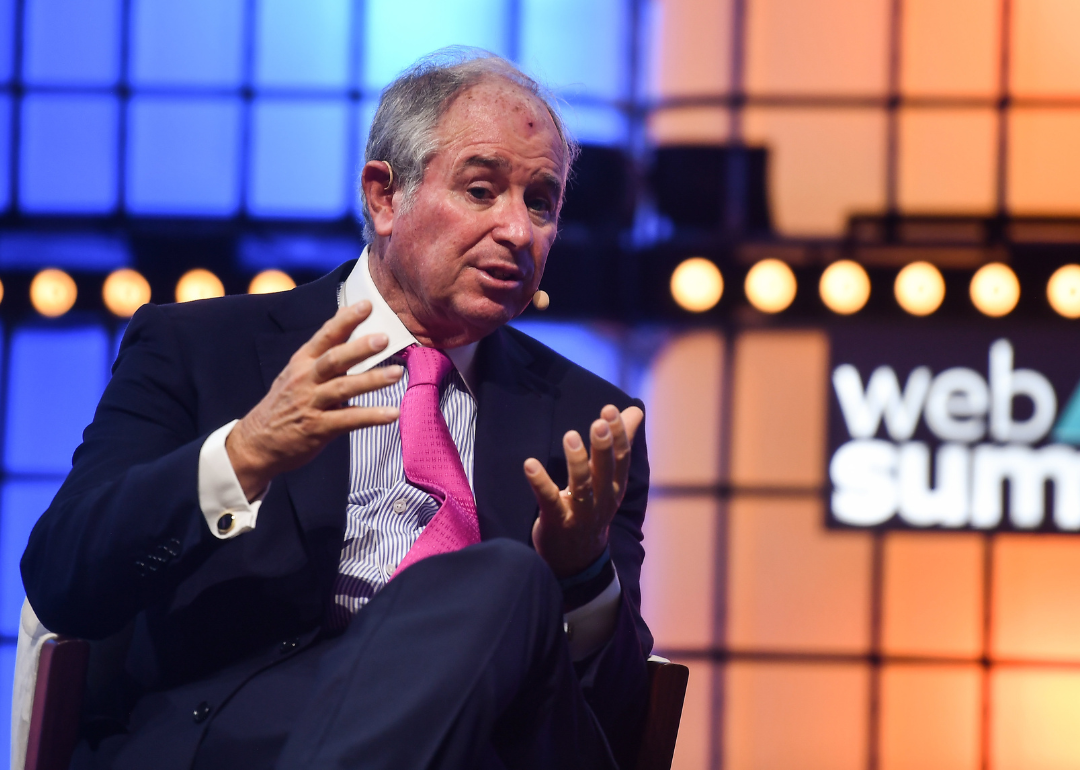
David Fitzgerald // Getty Images
#24. Stephen Schwarzman
– Estimated net worth: $29.1 billion
– Age: 75
– State of residence: New York
– Source of wealth: investments
After leaving financial services firm Lehman Brothers in the 1980s, Stephen Schwarzman partnered with his friend Pete Peterson to start another investment firm, Blackstone Group. Blackstone Group expanded and led to Schwarzman’s success as a sought-after broker, providing advice to clients like the Department of the Treasury.

Eric Jones // Wikimedia Commons
#23. Jeff Yass
– Estimated net worth: $30 billion
– Age: 66
– State of residence: Pennsylvania
– Source of wealth: trading, investments
Jeff Yass started as an accountant and was a professional gambler for a while. But eventually, he became a corporate executive and, in 1987, co-founded the investment company that became Susquehanna International Group. SIG has invested in numerous companies globally and has donated millions to conservative political groups and candidates.

Gregg DeGuire // Getty Images
#22. Len Blavatnik
– Estimated net worth: $30.7 billion
– Age: 65
– State of residence: New York
– Source of wealth: music, chemicals
Len Blavatnik has a diversified portfolio of investments. The billionaire business magnate is known for his high-reward but risky business deals, from oil to chemicals to music. Blavatnik has stakes in the chemical company LyondellBasell, clothing retailer Tory Burch, Warner Music Group, and Spotify.
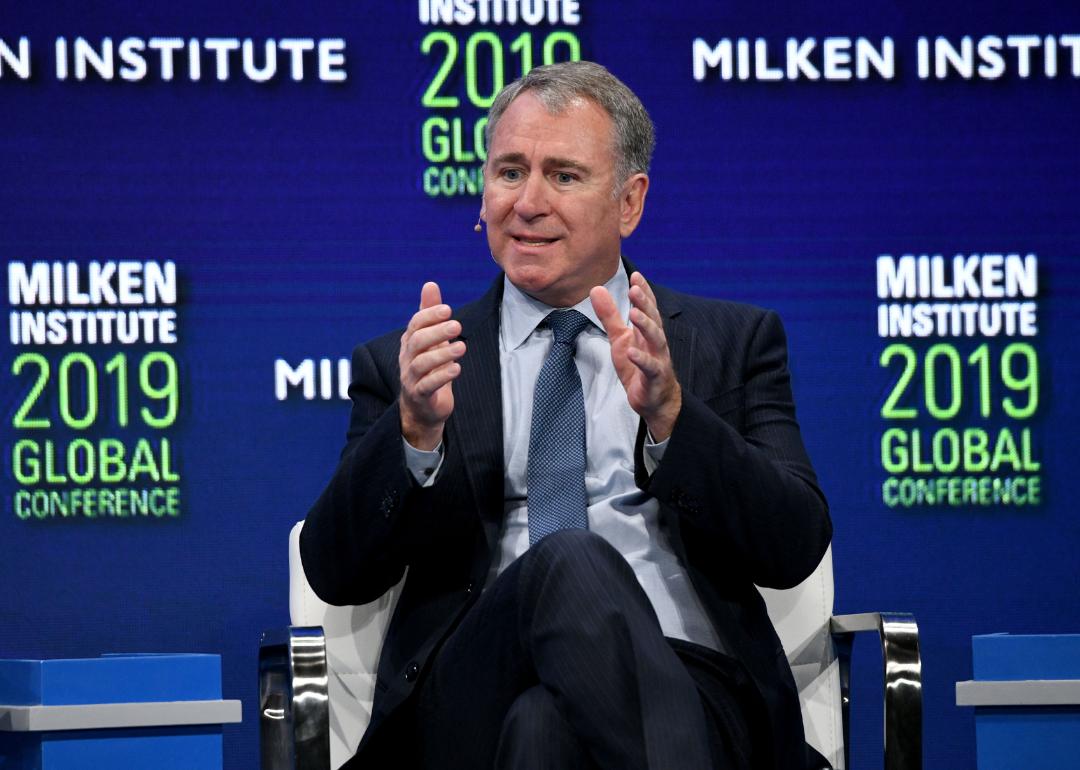
Michael Kovac // Getty Images
#21. Ken Griffin
– Estimated net worth: $30.8 billion
– Age: 54
– State of residence: Florida
– Source of wealth: hedge funds
Ken Griffin is the founder of Citadel, the Florida-based hedge fund where he’s made the bulk of his fortune. During his undergraduate days at Harvard University, Griffin started investing and placed a satellite dish on the roof of his dorm to obtain real-time stock data.
You may also like: Highest-paying jobs with no formal education requirements

Pool // Getty Images
#19. Jacqueline Mars (tie)
– Estimated net worth: $37 billion
– Age: 83
– State of residence: Virginia
– Source of wealth: candy, pet food
M&M’s, Snickers, Skittles, and Milky Way are all products of Mars, the candymaker partially owned by Jacqueline Mars, who inherited the company from her family, which founded its first factory in 1911. Today, Mars oversees the candymaker’s various products beyond candy, including chewing gum and pet care products.

WPA Pool // Getty Images
#19. John Mars (tie)
– Estimated net worth: $37 billion
– Age: 87
– State of residence: Wyoming
– Source of wealth: candy, pet food
Alongside his sister Jacqueline, John Mars owns the Mars manufacturing company, which produces candy, chewing gum, and pet care products. In 2015, he was knighted by Queen Elizabeth II.

Toni Anne Barson // Getty Images
#18. MacKenzie Scott
– Estimated net worth: $37.7 billion
– Age: 52
– State of residence: Washington
– Source of wealth: Amazon
After Mackenzie Scott and her ex-husband, Amazon founder Jeff Bezos, divorced in 2019, Mackenzie inherited a 4% stake in Amazon’s shares, valued at $38 billion.
The former couple met in 1992 when they both worked for D.E. Shaw, a New York hedge fund, and married the following year. It was Scott who encouraged Bezos to launch an online business. Since becoming one of the wealthiest women in the world, Scott has dedicated a large portion of her wealth to philanthropic initiatives.

Christian Petersen // Getty Images
#17. Phil Knight & family
– Estimated net worth: $41.5 billion
– Age: 84
– State of residence: Oregon
– Source of wealth: Nike
Before becoming the co-founder of sneaker giant Nike, Phil Knight had joined the University of Oregon track team. There, Knight became good friends with coach Bill Bowerman, who would later become his business partner. Soon after completing a business program, Knight borrowed $50 from his father to import high-quality running shoes from Japan at an affordable cost. The shoe mogul has undoubtedly come a long way from selling sneakers out of the trunk of his car in 1964, earning $8,000 in his first year. As of November 2022, the Nike brand is worth over $40 billion.

Diego Donamaria // Getty Images
#16. Michael Dell
– Estimated net worth: $50 billion
– Age: 57
– State of residence: Texas
– Source of wealth: Dell Technologies
Michael Dell’s dream of developing and selling computers began in his dorm room at the University of Texas. Less than 10 years later, he became the founder and CEO of Dell. Dell’s vision for computers was the ability for consumers to buy machines customized to their needs. Today, the computer technology market is worth $13.5 billion.
You may also like: Inside the chaotic, highly lucrative world of influencer marketing today

Stefanie Keenan // Getty Images
#15. Alice Walton
– Estimated net worth: $55.7 billion
– Age: 73
– State of residence: Texas
– Source of wealth: Walmart
Alice Walton inherited Walmart from her father, Sam Walton, who established the company in Arkansas in 1962. Alice is known for her curation and support of the arts and is considered one of the richest women in the world, according to Forbes.

The Washington Post // Getty Images
#13. Charles Koch (tie)
– Estimated net worth: $56 billion
– Age: 87
– State of residence: Kansas
– Source of wealth: Koch Industries
Charles Koch is the chairman of Koch Industries, the far-reaching corporation involved in oil production, chemicals, commodity trading, and investing. He inherited Koch Industries from his father, Fred Koch, and co-owned the company with his brother David, who passed away at age 79 in 2019. The two brothers are known for their involvement in conservative politics and think tanks.

Patrick McMullan // Getty Images
#13. Julia Koch & family (tie)
– Estimated net worth: $56 billion
– Age: 60
– State of residence: New York
– Source of wealth: Koch Industries
Julia Koch and her three children were bequeathed a 42% stake in the business co-owned by her late husband, David Koch. Koch Industries refines oil and manufactures fertilizer and paper products. The couple, who met on a blind date in the early ’90s, were philanthropists and collectively donated millions to Mount Sinai Medical Center and the Stanford Children’s Hospital.

Ethan Miller // Getty Images
#12. Rob Walton
– Estimated net worth: $56.7 billion
– Age: 78
– State of residence: Arkansas
– Source of wealth: Walmart
Rob Walton is the son of the late Sam Walton, who founded Walmart, the largest retailer in the world. After Sam passed away, Rob took over as Walmart’s chairman in 1992. In June 2022, the Walmart heir and his family purchased the Denver Broncos for $4.65 billion, the most expensive sale price for an American sports team. Walton outbid other groups who also bid well over $4 billion.

Marc Piasecki // Getty Images
#11. Mark Zuckerberg
– Estimated net worth: $57.7 billion
– Age: 38
– State of residence: California
– Source of wealth: Facebook
As the well-known story goes, Mark Zuckerberg created Facebook in his dorm room at Harvard University in 2004. Less than 15 years later, the social media platform—worth more than $290 billion—has nearly 3 billion users and is credited with connecting people worldwide. It has also been at the center of several misinformation and political propaganda scandals, some of which have required Zuckerberg to testify before Congress. Zuckerberg remains the company’s CEO and is expanding his interests in philanthropy.
You may also like: Youngest billionaires in America

Rick T. Wilking // Getty Images
#10. Jim Walton
– Estimated net worth: $57.9 billion
– Age: 74
– State of residence: Arkansas
– Source of wealth: Walmart
Like his siblings Alice and Rob, Jim Walton inherited a share of Walmart from his father. Today, he runs Arvest Bank, an Arkansas-based financial services company.
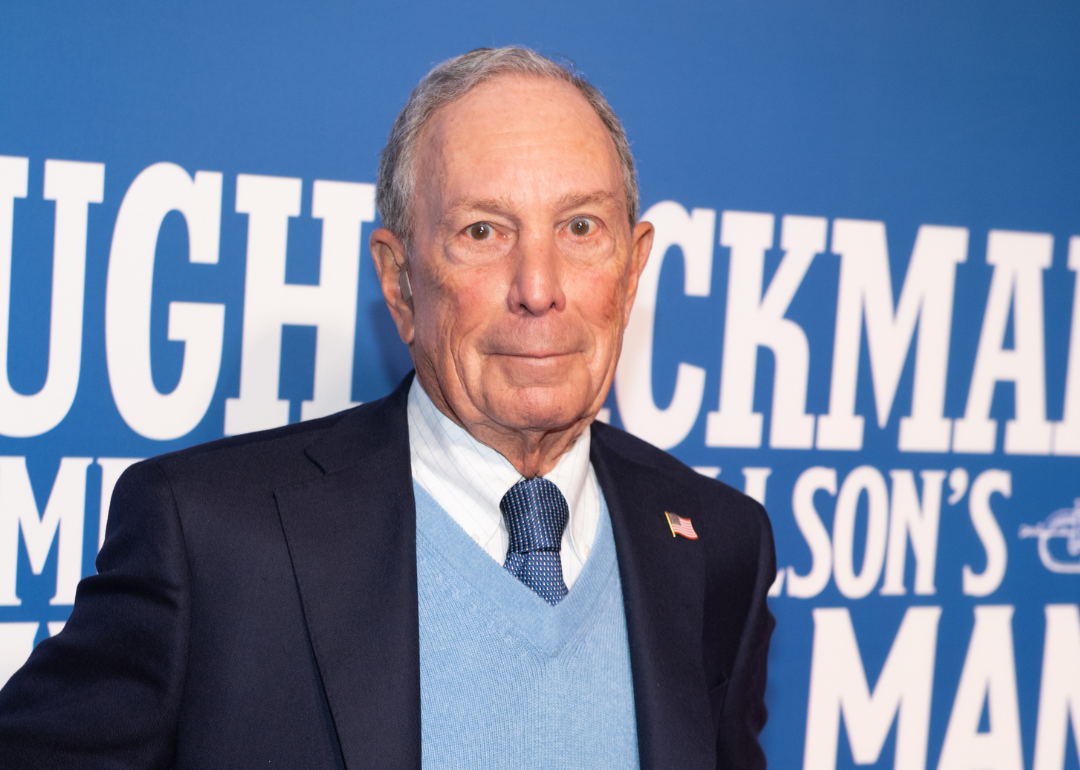
Noam Galai // Getty Images
#9. Michael Bloomberg
– Estimated net worth: $76.8 billion
– Age: 80
– State of residence: New York
– Source of wealth: Bloomberg LP
In 1981, Michael Bloomberg founded the financial information company Bloomberg LP. With revenues of more than $9 billion, the company would later develop Bloomberg News and services for financial trading. Bloomberg also had a political career as mayor of New York City between 2002 and 2013.
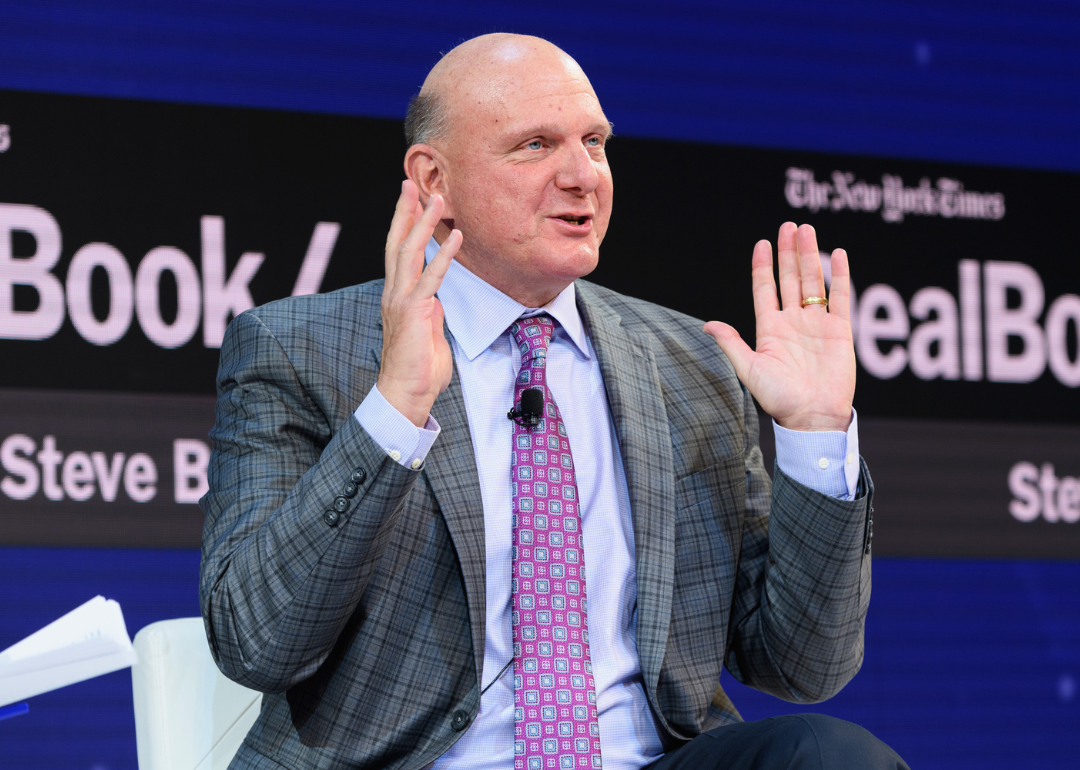
Michael Cohen // Getty Images
#8. Steve Ballmer
– Estimated net worth: $83 billion
– Age: 66
– State of residence: Washington
– Source of wealth: Microsoft
Business tycoon Steve Ballmer began his career at Microsoft and became the company’s president in 1998, then CEO in 2000. He purchased the Los Angeles Clippers NBA franchise in 2014 for $2 billion.

FABRICE COFFRINI // Getty Images
#7. Sergey Brin
– Estimated net worth: $89 billion
– Age: 49
– State of residence: California
– Source of wealth: Google
Sergey Brin runs Alphabet, the conglomerate organization best known for owning Google. Brin co-founded Google in 1998 with Larry Page after they met at Stanford University. Google owns 90% of the search engine market, bolstered by nonsearch products like Google Chrome and Google Home.
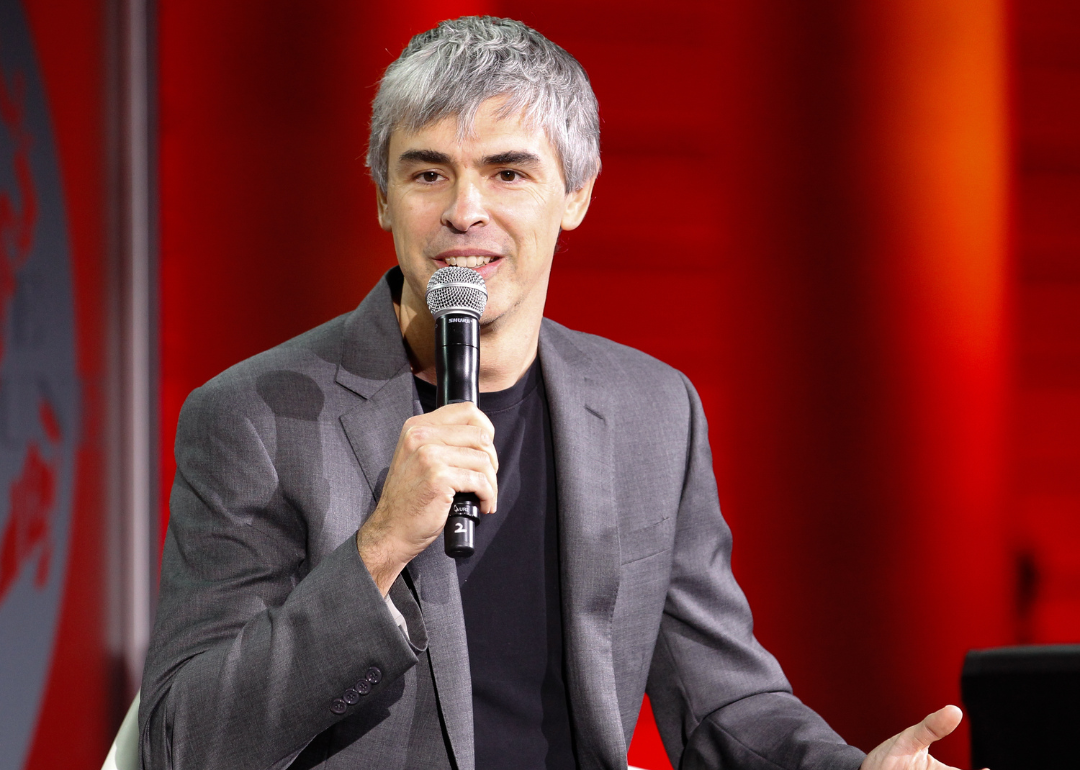
Kimberly White // Getty Images
#6. Larry Page
– Estimated net worth: $93 billion
– Age: 49
– State of residence: California
– Source of wealth: Google
Computer scientist Larry Page revolutionized the online search engine with the invention of Google alongside co-founder Sergey Brin. The two created the company in 1998 and later developed products such as Google Maps, the Pixel phone, and the Chromebook.
You may also like: How different generations feel about remote work
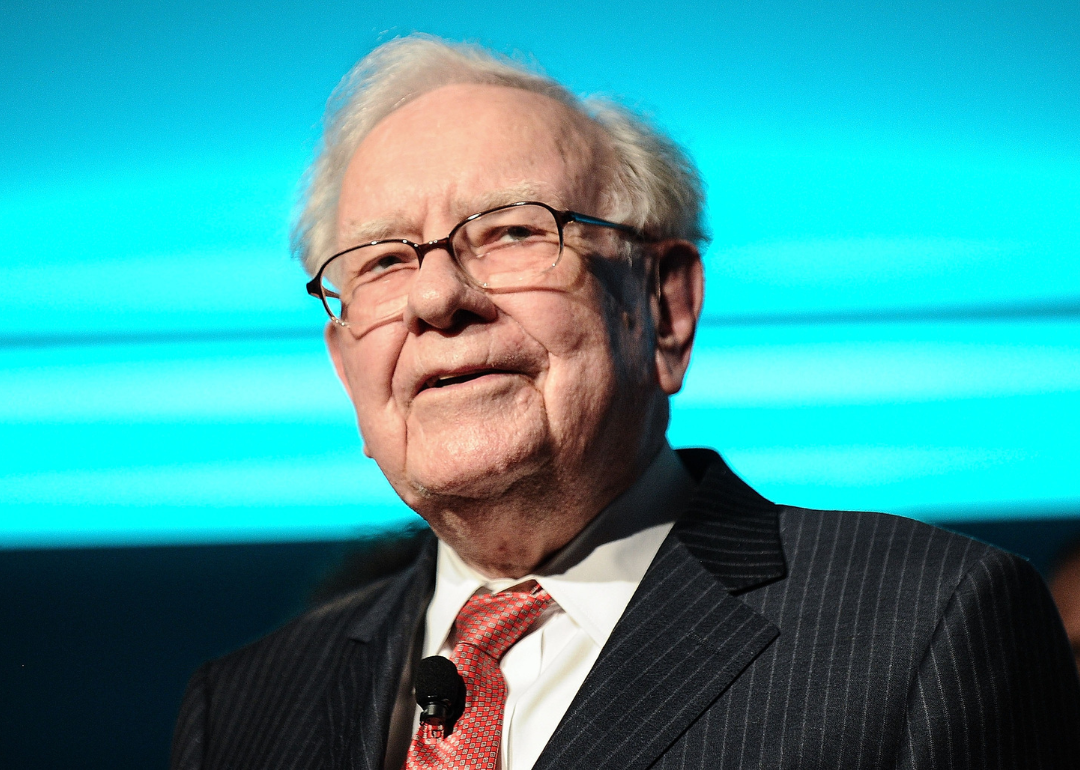
Daniel Zuchnik // Getty Images
#5. Warren Buffett
– Estimated net worth: $97 billion
– Age: 92
– State of residence: Nebraska
– Source of wealth: Berkshire Hathaway
Known in the investment world as the “Oracle of Omaha,” Warren Buffett made a fortune investing in media, energy, and insurance through Berkshire Hathaway. The Nebraska native assumed control of the company in the 1960s. In 2006, Buffett announced he would be donating his fortune to charity.

Phillip Faraone // Getty Images
#4. Larry Ellison
– Estimated net worth: $101 billion
– Age: 78
– State of residence: Hawaii
– Source of wealth: software
Larry Ellison founded the database management system Oracle in 1977. He remains a board member of the company, which has expanded into cloud technology and is the second-largest software development firm behind Microsoft. Ellison is also a prominent philanthropist in cancer research.

Taylor Hill // Getty Images
#3. Bill Gates
– Estimated net worth: $106 billion
– Age: 67
– State of residence: Washington
– Source of wealth: Microsoft
Along with Paul Allen, Bill Gates founded the technology company Microsoft in 1975. Years later, he stepped away from the company to pursue philanthropy with his wife. They later divorced, but the Bill & Melinda Gates Foundation remains focused on improving global health care and eradicating poverty. The foundation has a trust of more than $50 billion.
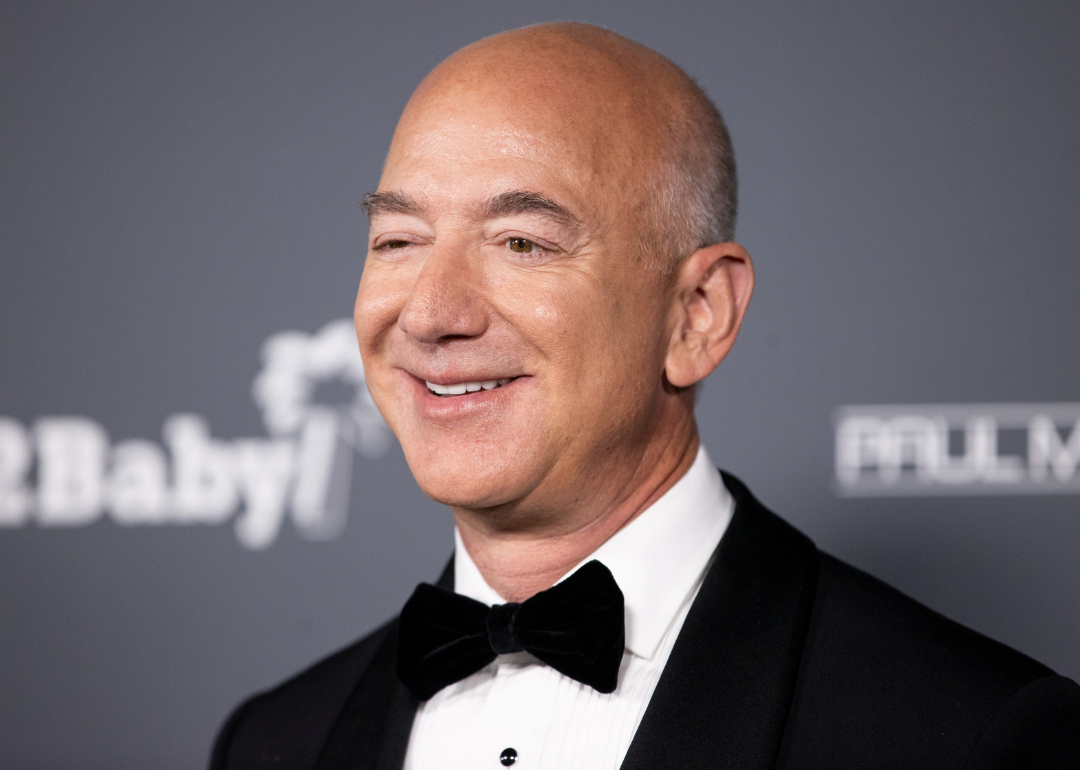
Emma McIntyre // Getty Images
#2. Jeff Bezos
– Estimated net worth: $151 billion
– Age: 58
– State of residence: Washington
– Source of wealth: Amazon
The tech entrepreneur Jeff Bezos is the first man ever to be worth more than $100 billion. He created the e-commerce platform Amazon, which has an annual revenue of more than $177 billion. Bezos also owns the Washington Post and the aerospace manufacturer Blue Origin.

SUZANNE CORDEIRO // Getty Images
#1. Elon Musk
– Estimated net worth: $251 billion
– Age: 51
– State of residence: Texas
– Source of wealth: PayPal, Tesla, SpaceX
Elon Musk was born in South Africa and moved to California to pursue a Ph.D. in the mid-1990s. His first financial successes include the development of Zip2, an online city guide, and PayPal. In the early 2000s, he began developing electric cars with his company Tesla Motors. The Tesla Roadster starts at $200,000 and is the same car Musk sent to space with his SpaceX exploration program. In October 2022, he closed a controversial bid on the social media platform Twitter for a reported $44 billion and presently owns an estimated 82% of the company.
You may also like: Richest women in America
Founded in 2017, Stacker combines data analysis with rich editorial context, drawing on authoritative sources and subject matter experts to drive storytelling.
You may like
Business
5 tech advancements sports venues have added since your last event
Published
8 hours agoon
April 19, 2024
In today’s digital climate, consuming sports has never been easier. Thanks to a plethora of streaming sites, alternative broadcasts, and advancements to home entertainment systems, the average fan has myriad options to watch and learn about their favorite teams at the touch of a button—all without ever having to leave the couch.
As a result, more and more sports venues have committed to improving and modernizing their facilities and fan experiences to compete with at-home audiences. Consider using mobile ticketing and parking passes, self-service kiosks for entry and ordering food, enhanced video boards, and jumbotrons that supply data analytics and high-definition replays. These innovations and upgrades are meant to draw more revenue and attract various sponsored partners. They also deliver unique and convenient in-person experiences that rival and outmatch traditional ways of enjoying games.
In Los Angeles, the Rams and Chargers’ SoFi Stadium has become the gold standard for football venues. It’s an architectural wonder with closer views, enhanced hospitality, and a translucent roof that cools the stadium’s internal temperature.
The Texas Rangers’ ballpark, Globe Life Field, added field-level suites and lounges that resemble the look and feel of a sports bar. Meanwhile, the Los Angeles Clippers are building a new arena (in addition to retail space, team offices, and an outdoor public plaza) that will seat 18,000 people and feature a fan section called The Wall, which will regulate attire and rooting interest.
It’s no longer acceptable to operate with old-school facilities and technology. Just look at Commanders Field (formerly FedExField), home of the Washington Commanders, which has faced criticism for its faulty barriers, leaking ceilings, poor food options, and long lines. Understandably, the team has been attempting to find a new location to build a state-of-the-art stadium and keep up with the demand for high-end amenities.
As more organizations audit their stadiums and arenas and keep up with technological innovations, Uniqode compiled a list of the latest tech advancements to coax—and keep—fans inside venues.
![]()
Jeff Gritchen/MediaNews Group/Orange County Register // Getty Images
Just Walk Out technology
After successfully installing its first cashierless grocery store in 2020, Amazon has continued to put its tracking technology into practice.
In 2023, the Seahawks incorporated Just Walk Out technology at various merchandise stores throughout Lumen Field, allowing fans to purchase items with a swipe and scan of their palms.
The radio-frequency identification system, which involves overhead cameras and computer vision, is a substitute for cashiers and eliminates long lines.
RFID is now found in a handful of stadiums and arenas nationwide. These stores have already curbed checkout wait times, eliminated theft, and freed up workers to assist shoppers, according to Jon Jenkins, vice president of Just Walk Out tech.
Billie Weiss/Boston Red Sox // Getty Images
Self-serve kiosks
In the same vein as Amazon’s self-scanning technology, self-serve kiosks have become a more integrated part of professional stadiums and arenas over the last few years. Some of these function as top-tier vending machines with canned beers and nonalcoholic drinks, shuffling lines quicker with virtual bartenders capable of spinning cocktails and mixed drinks.
The kiosks extend past beverages, as many college and professional venues have started using them to scan printed and digital tickets for more efficient entrance. It’s an effort to cut down lines and limit the more tedious aspects of in-person attendance, and it’s led various competing kiosk brands to provide their specific conveniences.
Kyle Rivas // Getty Images
Mobile ordering
Is there anything worse than navigating the concourse for food and alcohol and subsequently missing a go-ahead home run, clutch double play, or diving catch?
Within the last few years, more stadiums have eliminated those worries thanks to contactless mobile ordering. Fans can select food and drink items online on their phones to be delivered right to their seats. Nearly half of consumers said mobile app ordering would influence them to make more restaurant purchases, according to a 2020 study at PYMNTS. Another study showed a 22% increase in order size.
Many venues, including Yankee Stadium, have taken notice and now offer personalized deliveries in certain sections and established mobile order pick-up zones throughout the ballpark.
Darrian Traynor // Getty Images
QR codes at seats
Need to remember a player’s name? Want to look up an opponent’s statistics at halftime? The team at Digital Seat Media has you covered.
Thus far, the company has added seat tags to more than 50 venues—including two NFL stadiums—with QR codes to promote more engagement with the product on the field. After scanning the code, fans can access augmented reality features, look up rosters and scores, participate in sponsorship integrations, and answer fan polls on the mobile platform.
Boris Streubel/Getty Images for DFL // Getty Images
Real-time data analytics and generative AI
As more venues look to reinvigorate the in-stadium experience, some have started using generative artificial intelligence and real-time data analytics. Though not used widely yet, generative AI tools can create new content—text, imagery, or music—in conjunction with the game, providing updates, instant replays, and location-based dining suggestions
Last year, the Masters golf tournament even began including AI score projections in its mobile app. Real-time data is streamlining various stadium pitfalls, allowing operation managers to monitor staffing issues at busy food spots, adjust parking flows, and alert custodians to dirty or damaged bathrooms. The data also helps with security measures. Open up an app at a venue like the Honda Center in Anaheim, California, and report safety issues or belligerent fans to help better target disruptions and preserve an enjoyable experience.
Story editing by Nicole Caldwell. Copy editing by Paris Close. Photo selection by Lacy Kerrick.
This story originally appeared on Uniqode and was produced and
distributed in partnership with Stacker Studio.
Founded in 2017, Stacker combines data analysis with rich editorial context, drawing on authoritative sources and subject matter experts to drive storytelling.
Business
Import costs in these industries are keeping prices high
Published
1 week agoon
April 11, 2024
Inflation has cooled substantially, but Americans are still feeling the strain of sky-high prices. Consumers have to spend more on the same products, from the grocery store to the gas pump, than ever before.
Increased import costs are part of the problem. The U.S. is the largest goods importer in the world, bringing in $3.2 trillion in 2022. Import costs rose dramatically in 2021 and 2022 due to shipping constraints, world events, and other supply chain interruptions and cost pressures. At the June 2022 peak, import costs for all commodities were up 18.6% compared to January 2020.
While import costs have since fallen most months—helping to lower inflation—they remain nearly 12% above what they were in 2020. And beginning in 2024, import costs began to rise again, with January seeing the highest one-month increase since March 2022.
Machinery Partner used Bureau of Labor Statistics data to identify the soaring import costs that have translated to higher costs for Americans. Imports in a few industries have had an outsized impact, helping drive some of the overall spikes. Crop production, primary metal manufacturing, petroleum and coal product manufacturing, and oil and gas extraction were the worst offenders, with costs for each industry remaining at least 20% above 2020.
![]()

Machinery Partner
Imports related to crops, oil, and metals are keeping costs up
At the mid-2022 peak, import costs related to oil, gas, petroleum, and coal products had the highest increases, doubling their pre-pandemic costs. Oil prices went up globally as leaders anticipated supply disruptions from the conflict in Ukraine. The U.S. and other allied countries put limits on Russian revenues from oil sales through a price cap of oil, gas, and coal from the country, which was enacted in 2022.
This activity around the world’s second-largest oil producer pushed prices up throughout the market and intensified fluctuations in crude oil prices. Previously, the U.S. had imported hundreds of thousands of oil barrels from Russia per day, making the country a leading source of U.S. oil. In turn, the ban affected costs in the U.S. beyond what occurred in the global economy.
Americans felt this at the pump—with gasoline prices surging 60% for consumers year-over-year in June 2022 and remaining elevated to this day—but also throughout the economy, as the entire supply chain has dealt with higher gas, oil, and coal prices.
Some of the pressure from petroleum and oil has shifted to new industries: crop production and primary metal manufacturing. In each of these sectors, import costs in January were up about 40% from 2020.
Primary metal manufacturing experienced record import price growth in 2021, which continued into early 2022. The subsequent monthly and yearly drops have not been substantial enough to bring costs down to pre-COVID levels. Bureau of Labor Statistics reporting shows that increasing alumina and aluminum production prices had the most significant influence on primary metal import prices. Aluminum is widely used in consumer products, from cars and parts to canned beverages, which in turn inflated rapidly.
Aluminum was in short supply in early 2022 after high energy costs—i.e., gas—led to production cuts in Europe, driving aluminum prices to a 13-year high. The U.S. also imposes tariffs on aluminum imports, which were implemented in 2018 to cut down on overcapacity and promote U.S. aluminum production. Suppliers, including Canada, Mexico, and European Union countries, have exemptions, but the tax still adds cost to imports.
U.S. agricultural imports have expanded in recent decades, with most products coming from Canada, Mexico, the EU, and South America. Common agricultural imports include fruits and vegetables—especially those that are tropical or out-of-season—as well as nuts, coffee, spices, and beverages. Turmoil with Russia was again a large contributor to cost increases in agricultural trade, alongside extreme weather events and disruptions in the supply chain. Americans felt these price hikes directly at the grocery store.
The U.S. imports significantly more than it exports, and added costs to those imports are felt far beyond its ports. If import prices continue to rise, overall inflation would likely follow, pushing already high prices even further for American consumers.
Story editing by Shannon Luders-Manuel. Copy editing by Kristen Wegrzyn.
This story originally appeared on Machinery Partner and was produced and
distributed in partnership with Stacker Studio.
Founded in 2017, Stacker combines data analysis with rich editorial context, drawing on authoritative sources and subject matter experts to drive storytelling.
Business
The states where people pay the most in car insurance premiums
Published
2 weeks agoon
April 4, 2024
Nearly every state requires drivers to carry car insurance, but the laws vary, and many factors affect the cost of coverage.
Some are controllable, at least to degrees: the type of car you have and your credit history. Some are not: your age and gender. Your marital status, place of residence, and claims history are among the other variables that go into it.
Across the United States, premiums are soaring, rising 20% year over year and increasing six times faster than consumer prices overall as of December 2023, CBS reported. Last September, CNN noted that car insurance rates jumped more in the previous year than they had since 1976.
CBS pointed to many potential reasons for these increases in prices. Coronavirus pandemic-era issues have made buying, fixing, and replacing vehicles costlier. Extreme weather events caused by climate change also damage more vehicles, while insurance companies are increasing their business costs. Severe and more frequent crashes are to blame as well, CNN reported.
On top of these, local factors such as population density, the number of uninsured drivers, and the frequency of insurance claims all affect premiums, which can lead motorists to change or switch their coverage, use other modes of transportation, or even alter decisions about when to buy a vehicle or what to look for.
To see how geography affects cost, Cheap Insurance mapped the states where people pay the most in car insurance premiums using MarketWatch data. Premium estimates were based on full-coverage car insurance for a 35-year-old driver with good credit and a clean driving record. Data accurate as of February 2024.
![]()
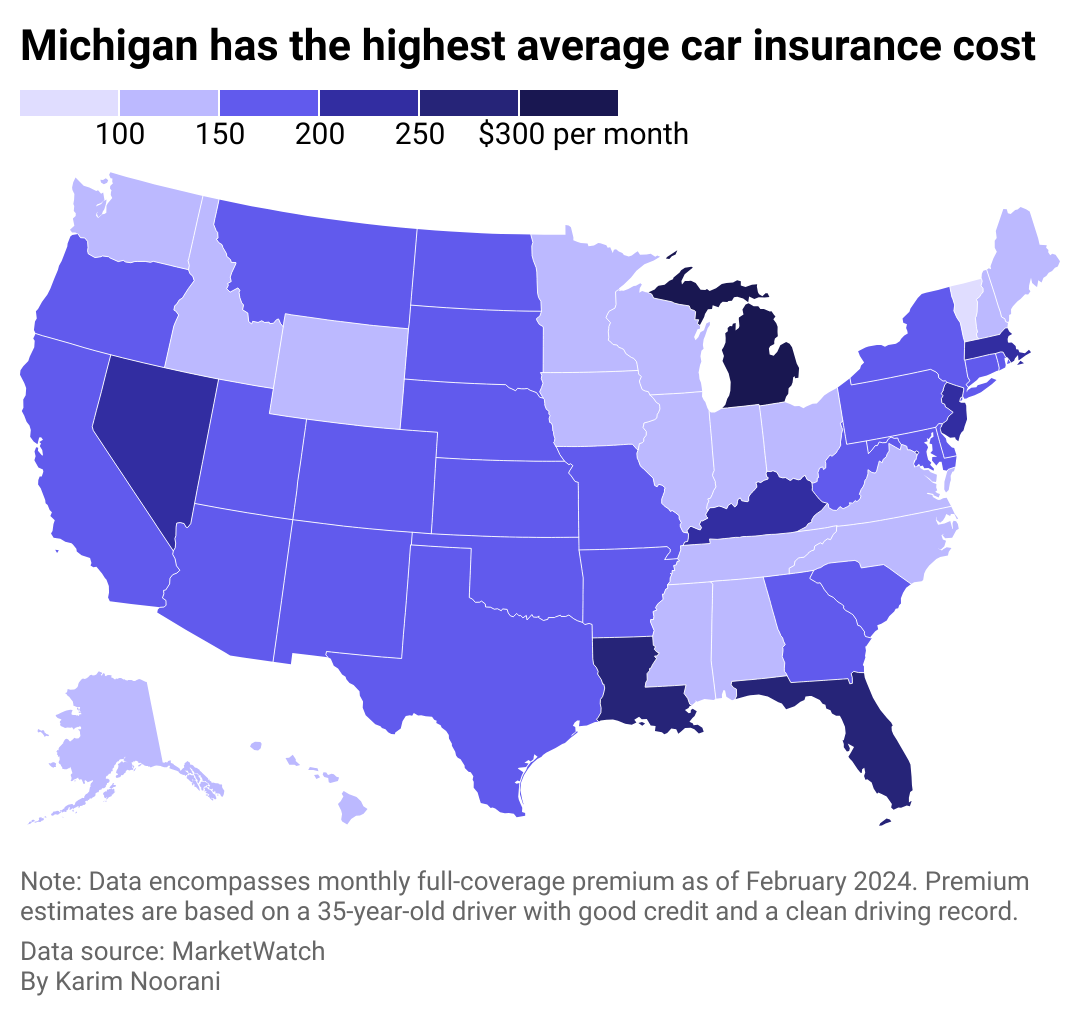
Cheap Insurance
Americans pay $167 per month on average for full-coverage insurance
There are common denominators among the five states where it’s most expensive to have car insurance: Michigan, Florida, Louisiana, Nevada, and Kentucky. Washington D.C. is another pricey locale, ranking #4 overall.
Three of these six are no-fault jurisdictions and require additional coverage beyond coverage to pay for medical costs. Michigan notably calls for $250,000 in personal injury protection (though people with Medicaid and Medicare may qualify for lower limits), $1 million in personal property insurance for damage done by your car in Michigan, and residual bodily injury and property damage liability that starts at $250,000 for a person harmed in an accident.
Other commonalities between these states include high urban population densities. At least 9 in 10 people in Nevada, Florida, and Washington D.C. live in cities and urban areas, which leads to more crashes and thefts and high rates of uninsured drivers and lawsuits. Additionally, Louisiana, Florida, and Kentucky rank #5, #8, and #10, respectively, in motor vehicle crash deaths per 100 million vehicle miles traveled in 2021 based on Department of Transportation data analyzed by the Insurance Institute for Highway Safety.

Canva
#5. Kentucky
– Monthly full-coverage insurance: $210
– Monthly liability insurance: $57

Canva
#4. Nevada
– Monthly full-coverage insurance: $232
– Monthly liability insurance: $107

Canva
#3. Louisiana
– Monthly full-coverage insurance: $253
– Monthly liability insurance: $77

Canva
#2. Florida
– Monthly full-coverage insurance: $270
– Monthly liability insurance: $115

Canva
#1. Michigan
– Monthly full-coverage insurance: $304
– Monthly liability insurance: $113
Story editing by Carren Jao. Copy editing by Paris Close. Photo selection by Lacy Kerrick.
This story originally appeared on Cheap Insurance and was produced and
distributed in partnership with Stacker Studio.
Founded in 2017, Stacker combines data analysis with rich editorial context, drawing on authoritative sources and subject matter experts to drive storytelling.
Featured
-

 Business4 months ago
Business4 months agomesh conference goes deep on AI, with experts focusing in on training, ethics, and risk
-

 Business4 months ago
Business4 months agoSkill-based hiring is the answer to labour shortages, BCG report finds
-

 Events6 months ago
Events6 months agoTop 5 tech and digital transformation events to wrap up 2023
-

 People4 months ago
People4 months agoHow connected technologies trim rework and boost worker safety in hands-on industries
-

 Events3 months ago
Events3 months agoThe Northern Lights Technology & Innovation Forum comes to Calgary next month






